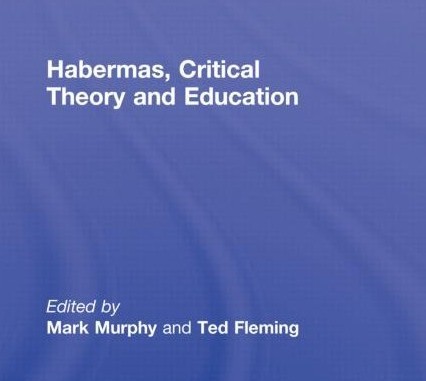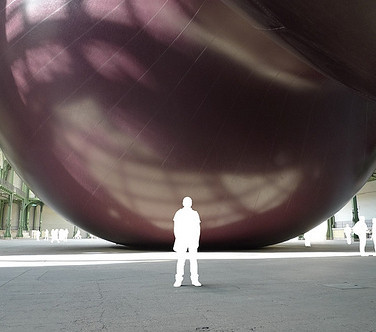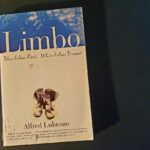Critical realism: What is it and does it relate to the broader discipline of critical theory?
Critical realism was developed most notably in the work of Ram Roy Bhaskar (2007; 2015), who developed it as a comprehensive philosophy of knowledge and being that offers an alternative to both positivism and constructivism, although it is arguably still somewhat dwarfed and/or marginalised by both of these paradigms.
Logic of inquiry: When used to study the world, critical realism relies on the logic of ‘retroduction’. This essentially involves working back inferentially from a known regularity in an attempt to identify a completely unknown or suspected explanatory mechanism. Methods can be either qualitative or quantitative depending on the research question(s).
Critical realist ontology: Ontology is an important consideration for critical realists. Essentially, critical realists posit a type of ontological depth by arguing that reality is stratified, possessing three layers or domains as follows:
- The empirical;
- The actual and…
- The real.
The empirical is simply the level of experiences and observations, the actual represents the level at which events happen and both are affected by the real, the level where generative mechanisms reside. Generative mechanisms, though they have the power to cause events, are not usually directly observable or accessible and therefore are the primary focus of critical realist research. Generative mechanisms are also ‘emergent’ in nature in that they may exist unrealised and may only be realised in a particular set of circumstances or may not be realised at all. Critical realist ontology is therefore objective, meaning critical realists are committed to the view that there is something ‘out there’ something which exists and can be studied and therefore known about. This objective ontology is then developed and nuanced further by arguing that the world is made up of both transitive and intransitive objects. In essence, transitive objects are the concepts, theories and models we create and use to understand the world (social and natural) whereas intransitive objects are the things that are real and that exist whether we know about it/them or not (Collier, 1994). The term transitive denotes the temporary or changeable nature of what we claim to know about, suggesting that the current state of knowledge often represents our best understanding at present.
Understanding or knowledge of transitive reality is then naturally subject to change, refutation and revision. Marx provides an elegant example here in the context of structured class relations between the owners of the means of production and workers. It is at first possible to suggest that the capitalist mode of production is socially constructed. However, over time this social structure takes on or is imbued with an objective existence, with workers believing it is largely immutable or beyond their power to change, challenge or control, if they think of it all. So entrenched in the fabric of society does this structure then become that it essentially results in an objective reality of false consciousness which is reinforced and hegemonized by the ideology of the ruling classes and which can leave workers oppressed, exploited and unaware of their ability to challenge this reality. This social structure is ontologically objective because it exists, acts upon and influences the workers whether they are aware of it or not. It is transitive in that new knowledge of it can be gained and it can be challenged and even changed or rejected outright. This example is also interesting in that it illustrates the important interplay between agency and structure that is itself a cornerstone of critical realism. Critical realists acknowledge this interplay and argue that social structures exist independently of current human activity and that while structure may only exist only as a result of human activity, it is not reducible to it. Bhaskar (2015, p. 36) has neatly summed this model of a society/person connection up as follows:
[P]eople do not create society. For it always pre-exists them and is a necessary condition for their activity. Rather, society must be regarded as an ensemble of structures, practices and conventions which individuals reproduce and transform, but which would not exist unless they did so. Society does not exist independently of human activity (the error of reification). But it is not the product of it (the error of voluntarism).
Epistemologically then, critical realism posits that social structures are suitable for scientific investigation because, while they may not be material or directly observable their emergent effects are. Social structures are seen as possessing deep causal powers that can initiate actions or events which can subsequently produce emergent effects or experiences. Therefore, phenomena in the social world can be understood, challenged and changed by studying the structures that generate events, arguably giving critical realism huge emancipatory potential.
Critical realism and critical theory:
Following on from this, it can be reasonably suggested that critical realism and critical theories of society are very often the subject of common association and, given the emancipatory research intentions present in both, this is not without foundation. In particular, the critical theory that originally grew out of the Frankfurt school in Germany in the 1930s, before becoming more internationally recognised in the 1960s, and critical realism are arguably closely related. When making the case for the overlapping nature of these two independently developed movements it must be recognised in the first instance that both critical realism and critical theory share common Marxist origins and, just as Marx was concerned to unveil the ‘real state of affairs’ in the society to which he turned his eye, so too are both critical theory and critical realism when examining current phenomena. It should also be recognised that neither tradition is concerned with a strict adherence to one type of method or another, rather, as Harvey (1990, p. 06), notes:
Critical social research requires that empirical material is collected. It does not matter whether it is statistical material, anecdotes, directly observed behaviour, media content, interview responses, art works or anything else. Whatever provides insights is suitable.
Harvey (1990) goes on to note a further congruence by suggesting that in critical social research, any data generated by the research process must be treated in the context of its specific socio-historical context and this is again reminiscent of Marx’s view of the importance of socio-historic contexts when examining existing structural relations. It is also echoed in critical realism. Both traditions also fundamentally reject positivist accounts of knowledge production by recognising that, as the social and natural worlds are very different, they require different modes of investigation and analysis. There is also a distinct emancipatory element to this rejection of positivism from both camps. Critical theorists and perhaps Habermas in particular, recognised that dominant positivist narratives potentially play a role in ensuring the continuation of status quo explanations of social phenomena. Critical realists for their part articulate this position by suggesting that looking beneath the surface and developing explanations for what causes things to happen is potentially emancipatory in that it can challenge and ultimately help change dominant narratives and discourses, something which positivistic approaches often fail to do or are not concerned with doing in the first place. This in turn brings matters to a further point of convergence, namely the role of critique in both critical theory and critical realism. Both critical theory and critical realism see a central and active role for critique in the research process. Central, in that use of the word critical is not throwaway or accidental; it is in fact a major concern of those working in each tradition, and active, in that the object of inquiry is often the focus of critique in the research process. It is not therefore the role of those working in these traditions to simply offer plain explanation or to highlight trends; rather it is the intention from the outset to critique the object of research, to probe beneath the surface of common-sense descriptions, to offer alternative understandings and to ultimately foster change where this is seen as appropriate. It could of course be argued that there is an element of critique in all research, however, as Harvey (1990, p. 02) notes:
The difference between critical approaches and noncritical approaches is not the difference between the presence and absence of critique, rather it is the difference between approaches in which critique is an integral part of the process and those in which it is peripheral
On this point it can of course be noted that it is at the discretion of the researcher or researchers (or funders) as to just how much of this critique is allowed into or is seen as important to the research process. There are undoubtedly researchers working within a realist paradigm of inquiry that do not necessarily place a prominent emphasis on critique. However, in both critical realism and critical theory, critique plays a purposeful and central role. In this respect, and in respect to the numerous points of congruence noted above, research carried out in either tradition is best described as research that is being conducted firmly in the tradition of the critical, which ultimately attempts to look beyond surface appearances in order to offer a more nuanced critique of the area under investigation.
Sources and further reading
Bhaskar, R. (2007) A Realist Theory of Science, London, Verso.
Bhaskar, R. (2015) The possibility of naturalism: a philosophical critique of the contemporary human sciences, London, Routledge.
Collier, A. (1994) Critical Realism: An Introduction to Roy Bhaskar’s Philosophy, London, Verso.
Harvey, L., 1990, Critical Social Research, London, Unwin Hyman.
Sayer, A. (1992) Method in social science: A realist approach, London, Routledge.











Thanks, Joe for sharing such great information. I really appreciate it.